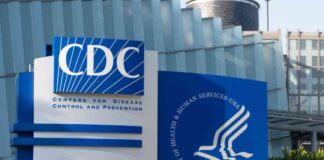Three Key Addiction and Drug Policy Trends to Watch in 2025
The addiction and overdose epidemic in the United States has been a pressing issue for years, with drug-related deaths reaching alarming rates. As we enter 2025, several significant trends are emerging that could shape the country’s response to this crisis. From changes in drug policy to evolving attitudes towards addiction treatment, it’s essential to keep an eye on these developments. Here are the top three addiction and drug policy trends to monitor in 2025.
1. Supervised Consumption Sites: A Controversial Strategy
Supervised consumption sites, where drug users can consume substances under medical supervision, have been a hotly debated harm reduction strategy. While the Trump administration vehemently opposed these sites, the landscape has shifted. Organizations in New York and Rhode Island are operating supervised consumption sites, challenging federal laws in place.
The nomination of Pam Bondi as attorney general under the Trump administration raises questions about the future of these sites. Will federal law enforcement crack down on them, or will there be a shift in policy? The stance of Robert F. Kennedy Jr., who has shown openness to supervised consumption, adds another layer of complexity to this issue. The debate over the effectiveness and legality of these sites will likely continue to unfold in 2025.
2. Opioid Addiction Treatment: Methadone and Buprenorphine
While advocating for addiction recovery and treatment solutions, Robert F. Kennedy Jr. has notably omitted discussion of two critical medications: methadone and buprenorphine. These medications are considered gold standards in treating opioid addiction, significantly reducing the risk of fatal overdoses.
Kennedy’s emphasis on alternative approaches like wellness farms and 12-step programs raises questions about his stance on evidence-based treatments. With the opioid crisis persisting, the role of medications like methadone and buprenorphine in combating addiction remains a crucial aspect of drug policy discussions in 2025.
3. Telehealth and Buprenorphine Prescriptions: A Policy Shift
The DEA’s decision on allowing providers to prescribe buprenorphine via telehealth has been a pivotal policy issue. Emergency rules during the Covid-19 pandemic facilitated access to this medication through telehealth, improving treatment accessibility for many individuals struggling with addiction.
As the temporary rules expire at the end of 2025, the DEA faces a critical decision on the future of telehealth prescriptions for buprenorphine. The impact of this decision on addiction treatment providers and patients could be significant, especially under an administration likely to prioritize law enforcement responses to the overdose crisis.
In conclusion, 2025 is poised to be a transformative year for addiction and drug policy in the United States. The evolving landscape of supervised consumption sites, the debate over opioid addiction treatment, and the future of telehealth prescriptions all present complex challenges and opportunities in addressing the ongoing epidemic. Stay informed and engaged as these trends continue to unfold.

















